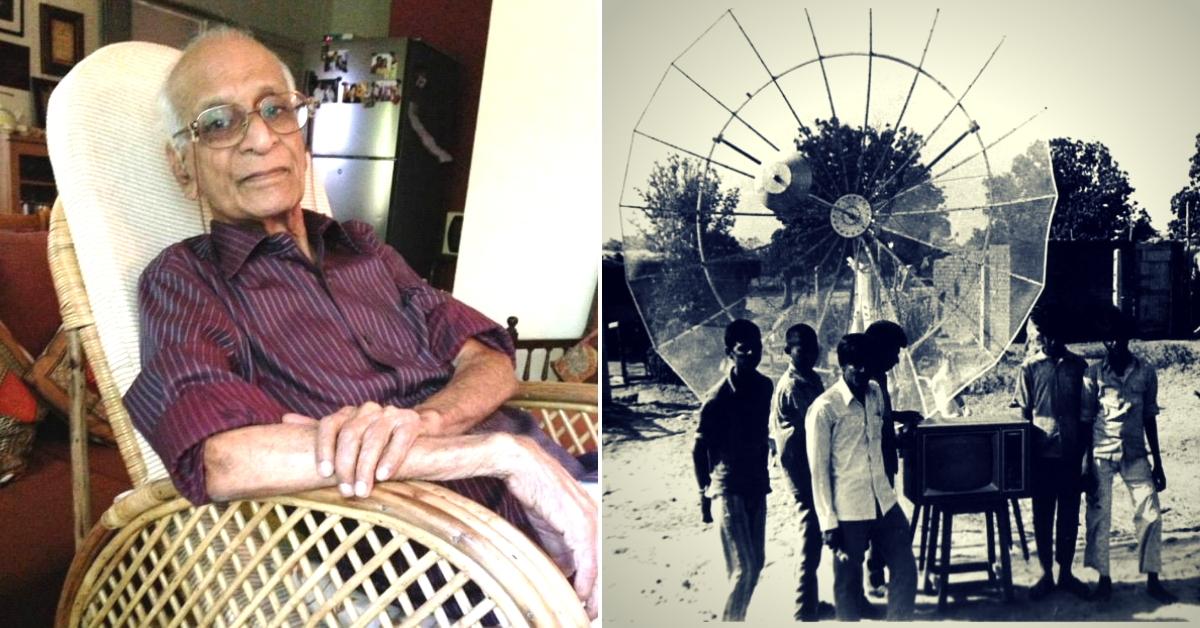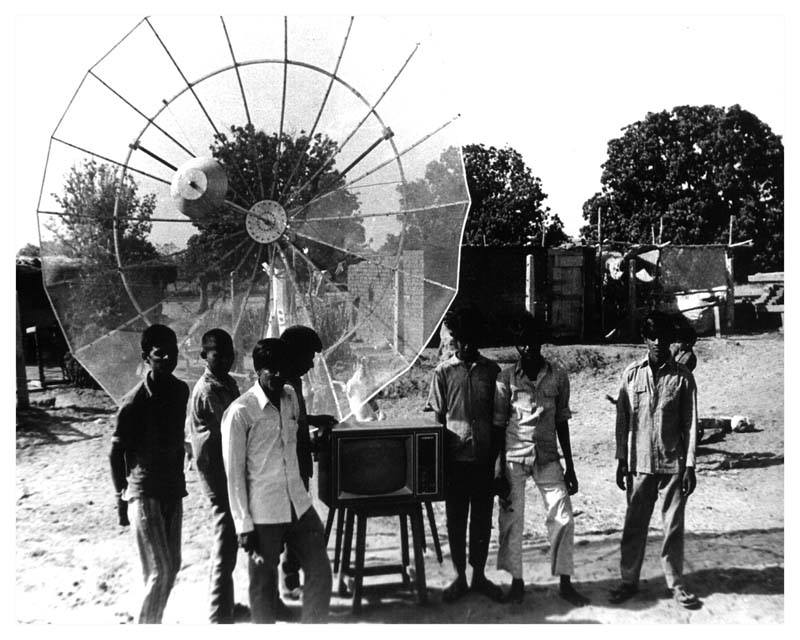DD’s First Director General, This Man Was a Founding Father of TV Broadcasting in India!
A pioneering powerhouse of independent India, PV Krishnamoorthy witnessed many historic events up close. Interestingly, he was welcomed into his first job with the words, “Get out"!

For 97-year-old PV Krishnamoorthy, a pioneer of television broadcasting in India, it wasn’t entirely strange to read a segment of his 2011 interview with The Hindu, where he says, “The greatest enemy of conversation is television.”
Watch any prime time ‘debate’ on news channels, and it isn’t very hard to understand what he’s trying to say and the irony of it. For PV Krishnamoorthy (PVK) remembers a time when he sought to make the medium educational for the masses.
In 1976, public television broadcaster Doordarshan (DD) had split from its parent entity, the All India Radio, and it was PVK who became its first director general (DG).
Born in Rangoon, Myanmar, on April 1, 1921, Krishnamoorthy’s family was forced to run away from there in 1942 because of incessant bombing by the Japanese forces at the height of World War II.
“I was just a monthly-paid artiste when I joined the AIR as a Tamil (news)announcer in 1944. My career, in fact, started with the words ‘Get out!’ because I lost my way in Lutyens’ Delhi (he had just arrived from Coimbatore) and reported late for work at the Broadcasting House. I then became a programme assistant, then a programme executive, then an assistant station director, then station director, then a deputy director-general, and finally, the director-general. All this, without any sifaarish (currying favour in Hindi),” says Krishnamoorthy, in the same conversation with The Hindu.
Throughout his time in the broadcasting industry, TVK was witness to some of Independent India’s most memorable moments, starting with the recording of Jawaharlal Nehru’s first Independence Day speech and Sucheta Kriplani’s melodious rendition of Vande Mataram at the AIR studio in Delhi. At the time, he also had the opportunity to work with radio broadcasting legend Melville de Mellow.

Nonetheless, his association with DD began in 1960, when he was appointed as Officer on Special Duty. Before that posting, he was the station director of AIR Cuttack, where among other things, he helped unleash the talent of a certain flautist named Hari Prasad Chaurasia.
Back in the national capital, engineers at the AIR had just inaugurated a TV station with CCTV cameras left behind by the international utilities manufacturer Phillips following an exhibition at the famous Pragati Maidan venue. In 1972, he was posted to Bombay (Mumbai) and led operations at India’s first full-fledged TV studio, which was set up with assistance from German engineers.
His stint in Bombay was among the most eventful in his career—he inaugurated popular news-based programmes like ‘Parikrama’ hosted by prominent 20th century Hindi writer Kamleshwar and Phool Khile Hain Gulshan Gulshan, a talk show hosted by child actress-turned-host Tabassum, where among other celebrities, she interviewed film stars. Incidentally, TVK composed the soundtrack for this show.
In fact, during his time in Bombay, TVK had also helped launch the career of a certain Smita Patil, one of India’s greatest actors.
“One morning, a dusky woman barged into my office. She was in tears. She had auditioned for the job of a newsreader and had been rejected. She was pleading for fairness. From one look I could tell she was cut out for television. I made her go behind the camera again and gave her the job of an announcer. Later, Shyam Benegal spotted her and gave her a role in his film,” TVK told The Hindu.
Two years later, Prime Minister Indira Gandhi appointed him as the Deputy Director General of DD. He was tasked with producing 1320 hours of software that the government would use for its Satellite Instructional Television Experiment (SITE).
Also Read: 10 Incredible Facts About Dr Vikram Sarabhai, the Father of the Indian Space Programme
SITE was an experimental satellite communications project designed together by NASA and the Indian Space Research Organization (ISRO), which made available informational television programmes to rural India in three languages and broadcast across six states. Launched on the back of the ATS-6 satellite on May 30, 1974, from Cape Kennedy in the United States, TVK managed to lead efforts that delivered those hours of software despite inadequate resources.
“I stayed for weeks in each studio (Cuttack, Delhi, Hyderabad). The staff delivered. They produced do-it-yourself science programmes for children, programmes on agricultural innovations, family planning, a teacher training programme, and entertainment programmes based on folk arts. Remote villages were chosen for the experiment, and where there was no power supply, battery operated sets were used,” he said, in another interview with The Hindu.

During the Emergency, TVK was tasked with starting TV stations across many cities, thus laying the foundations for modern broadcasting in India. Unlike his other media colleagues at AIR and DD, TVK wasn’t hauled up by the Moraji Desai-appointed Shah Commission looking into the excesses of Emergency, because he was travelling all the time and building things.
TVK was also responsible for launching India’s first TV commercial—an advertisement for Gwalior Suitings that Doordarshan aired in 1978. A year later, he retired, but by that time DD had opened many stations in small towns across the country. In 1982, he moved to Madras (Chennai) and served as an adult education consultant for UNICEF. Following retirement, he was also the vice-chairman of the prestigious Sangeet Natak Akademi and elected its Tagore Fellow.
Of course, the real revolution in television broadcasting would only happen following India’s tryst with liberalisation in the early 1990s, which resulted in an explosion of private news channelsn which took away audiences from Doordarshan. Nonetheless, it’s the work of TVK and his teams in Doordarshan that truly laid the foundation for television broadcasting in India.
(Edited by Gayatri Mishra)
Like this story? Or have something to share? Write to us: [email protected], or connect with us on Facebook and Twitter.
If you found our stories insightful, informative, or even just enjoyable, we invite you to consider making a voluntary payment to support the work we do at The Better India. Your contribution helps us continue producing quality content that educates, inspires, and drives positive change.
Choose one of the payment options below for your contribution-
By paying for the stories you value, you directly contribute to sustaining our efforts focused on making a difference in the world. Together, let’s ensure that impactful stories continue to be told and shared, enriching lives and communities alike.
Thank you for your support. Here are some frequently asked questions you might find helpful to know why you are contributing?


This story made me
-
97
-
121
-
89
-
167











